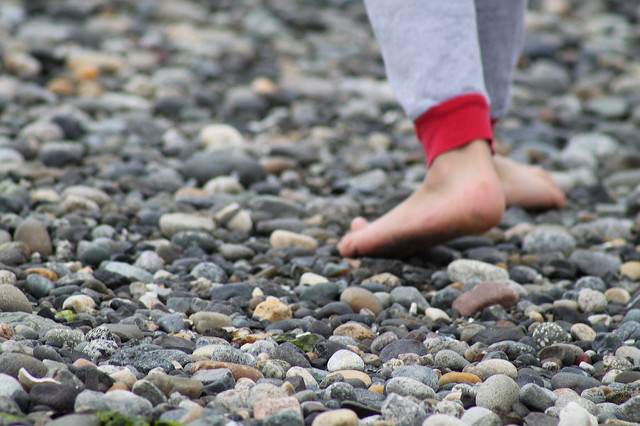Pet rocks are some of the easiest to care for pets around, but if you think all stones are created equal, think again. We’ve looked at some of the most popular pebbles with a parent’s eye-view of what kind of pet you would actually get. Read on for some of the basic characteristics of common rocks.
photo: laurie via flickr
Granite: This type of rock is one of the easiest breeds. Readily available in a variety of playgrounds, driveways and landscapes, the hardest part is choosing just one. This granite is tough and can handle all kinds of mistakes/neglect/oopsies, which makes it perfect for families with young kids. Even tempered, you’d never know this guy was once boiling magma.
Best for: all ages.
Obsidian: While possibly one of the smoothest rocks you can adopt, obsidian breeds are not without their challenges. Because they were once widely used to make tools, they have an underlying sharpness that requires patience and special handling. Any edges can become very sharp and lead to minor cuts. Obsidians should be handled with caution. A better choice for the slightly older and/or gentler child.
Best for: ages 6 and up, kids who don’t throw (much), kids who can’t or wouldn’t make weapons
photo: Paul Morris via flickr
Pumice: When looking for a fun-loving pet rock that you can take anywhere, look no further than the pumice stone. These rocks are lightweight, making them ideal for travel which means you can take them on vaycay with you. Easy-going, they don’t mind being dressed up and as an added bonus, they float in water so you can actually take them in the bath with you. The only downside to the pumice is it has a pretty rough coat so snuggling is usually kept to a minimum.
Best for: ages 2 and up.
Quartz or Quartz Crystal: Whether you choose the milky white or perfectly clear variety, or even one with a splash of purple, the quartz is a readily available and spectacular breed. Well suited to large families, they tend to absorb everything around them and can be sensitive. Rose quartz is know to help heal sad hearts and can often be found fashioned into a heart-shape. With a little love these rocks will be yours for a lifetime.
Best for: all ages, kids who need a little extra comfort in their pocket
Soapstone: Another relatively lightweight pet, soapstone is a softer stone and can be carved with moderate skill. Because they are soft, they may not be the best choice for households with teething children. Tweens and teenagers get along great with soapstone, as there is a mutual appreciation for the malleable nature and ability to become an entirely new personality on a daily basis.
Best for: mature kids, tweens, teenagers, very dextrous kids
photo: Jessica B via flickr
Agate: Although many breeds have agate in them, these colorful stones make a unique addition to any family. They come in a very wide variety of colors, from deep green to rusty brown, and are sometimes dyed to very vivid tones like fuchsia. Typically very smooth, they are usually too slippery to dress up properly, but luckily their natural beauty requires little adornment.
Best for: all ages and stages
Geodes: These magical rocks are rough in the looks department and often overlooked as an excellent pet because of their ho-hum outward appearance. Best for families with commitment issues, these are not keep-forever pets. In fact, they are great for families with a more cutthroat approach as striking a hammer to these babes proves rewarding: they crack open and deliver amazing colors/crystals inside. Do not dress them up, as that only makes it more difficult to smash them (and smashing them is the best part).
Best for: mature children, kids with a desire to smash things, teenagers, adults.
What’s your favorite rock breed?
—Amber Guetebier











